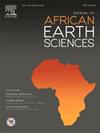洪水风险分解:摩洛哥 Zaio 市的优化机器学习灾害绘图和多标准脆弱性分析
IF 2.2
4区 地球科学
Q2 GEOSCIENCES, MULTIDISCIPLINARY
引用次数: 0
摘要
绘制城市洪水风险图对于有效缓解洪灾和城市规划至关重要。本研究利用机器学习和多标准决策分析(MCDA)技术评估并绘制了摩洛哥 Zaio 市的洪水风险图,以克服数据稀缺的挑战。我们采用随机森林(RF)模型和九个洪水条件因子来评估洪水风险,并采用层次分析法(AHP)来进行脆弱性评估。为了提高 RF 模型的性能,我们比较了三种超参数调整技术:贝叶斯优化 (RF-BO)、遗传算法 (RF-GA) 和网格搜索 (RF-GS)。RF-BO 在洪水灾害建模中表现出更高的准确性。采用 AHP 方法评估了洪水脆弱性,并纳入了社会和物理因素。通过将 RF-BO 危害模型与 AHP 脆弱性评估相结合,绘制了最终的洪水风险地图。结果表明,Zaio 的洪水灾害受地形和河流距离等因素的影响很大。此外,靠近河流的人口密集区,尤其是西南部居民区,面临的洪水风险更大。研究结果凸显了多重线性回归模型、多参数数据模型和超参数优化在城市洪水风险绘图中的实用性,从而能够识别出应优先进行洪水保护工作的高风险城市区域。这种方法在水文数据有限的无测站地区尤其有价值。本文章由计算机程序翻译,如有差异,请以英文原文为准。
Flood risk decomposed: Optimized machine learning hazard mapping and multi-criteria vulnerability analysis in the city of Zaio, Morocco
Urban flood risk mapping has become crucial for effective mitigation and urban planning. This study assesses and maps flood risk in the city of Zaio, Morocco, using machine learning and Multi-Criteria Decision Analysis (MCDA) techniques to overcome data scarcity challenges. We employed the Random Forest (RF) model with nine flood conditioning factors for flood hazard and the Analytical Hierarchy Process (AHP) for vulnerability assessment. To enhance RF model performance, we compared three hyperparameter tuning techniques: Bayesian Optimization (RF-BO), Genetic Algorithm (RF-GA), and Grid Search (RF-GS). RF-BO demonstrated superior accuracy in flood hazard modelling. Flood vulnerability was assessed using AHP, incorporating social and physical factors. The final flood risk map was produced by combining the RF-BO hazard model with the AHP vulnerability assessment. Results indicate that flood hazard in Zaio is significantly affected by factors such as topography and distance to rivers. Moreover, areas with high population density closer to rivers, especially in the south-western residential area, were found to be more exposed to flood risk. The findings highlight the utility of ML models, MCDA, and hyperparameter optimization in urban flood risk mapping, enabling the identification of high-risk urban areas that should be prioritized for flood protection efforts. This approach proves especially valuable in ungauged regions with limited hydrological data.
求助全文
通过发布文献求助,成功后即可免费获取论文全文。
去求助
来源期刊

Journal of African Earth Sciences
地学-地球科学综合
CiteScore
4.70
自引率
4.30%
发文量
240
审稿时长
12 months
期刊介绍:
The Journal of African Earth Sciences sees itself as the prime geological journal for all aspects of the Earth Sciences about the African plate. Papers dealing with peripheral areas are welcome if they demonstrate a tight link with Africa.
The Journal publishes high quality, peer-reviewed scientific papers. It is devoted primarily to research papers but short communications relating to new developments of broad interest, reviews and book reviews will also be considered. Papers must have international appeal and should present work of more regional than local significance and dealing with well identified and justified scientific questions. Specialised technical papers, analytical or exploration reports must be avoided. Papers on applied geology should preferably be linked to such core disciplines and must be addressed to a more general geoscientific audience.
 求助内容:
求助内容: 应助结果提醒方式:
应助结果提醒方式:


